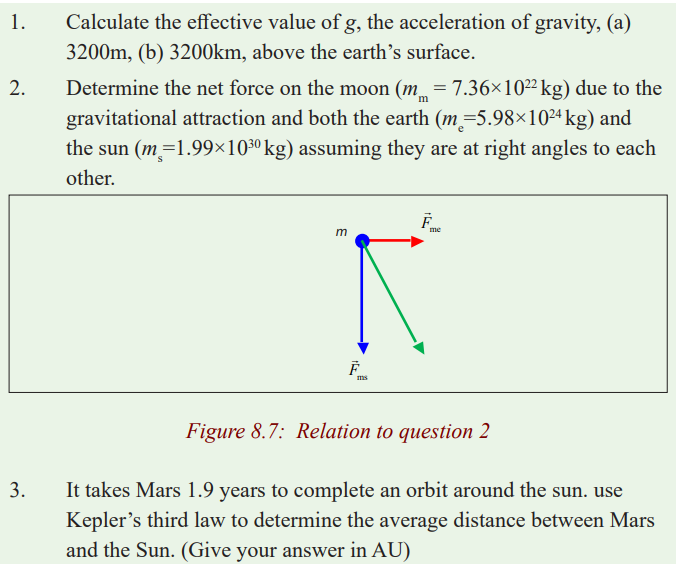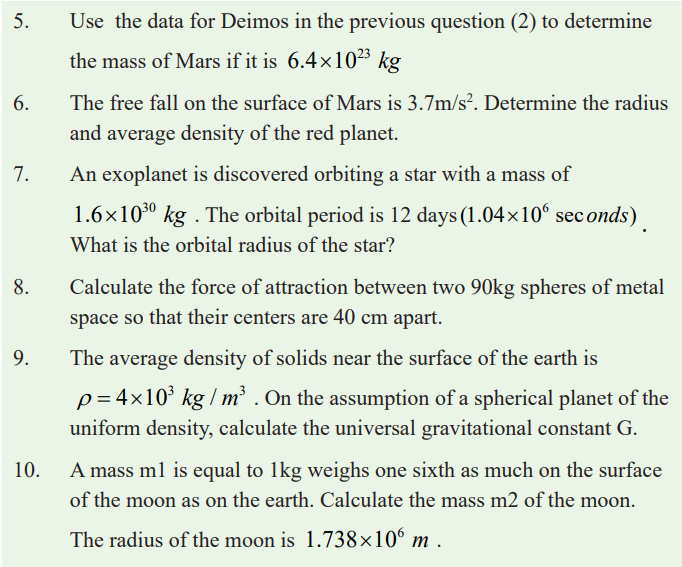Unit 8 :Universal gravitational field and potential
Key Unit Competence
Explain the gravitational field, gravitational potential and their applications in
planetary motion.
My goals
By the end of this unit, I will be able to:
* explain universal gravitation field.
* describe the factors affecting force of gravity.
* state and explain Kepler’s laws of planetary motion.
* investigate planetory motion using computer simulation.
Link to other subjects
Geography and Astronomy (Landslides, motion of planets and satellites)
Chemistry (Electrons orbiting the nucleus).
Introductory activity
In observatory, people can see different heavenly bodies such as planets,
stars, moons, asteroids, comets and others moving in the universe. The
most question that people ask themselves is to know what hold those bodiesin their positions in the universe.
Questions
1. Discuss on what you think maintain planets in their position when
revolving around the Sun.
2. Discuss the factors that the motion planets depend on.
3. Give other examples of bodies that use same properties in the casestudy above.
Introduction
The Universe is composed of different planets one of which is the earth.
All objects on the earth remain on it. They cannot move away unless acted on
by external forces. This shows that there is a region around it that provides aforce that attracts these earthly objects.
Since the earth is part of the universe it follows that a round the universe thereis attracting field.
This is called universal gravitational field.
Universal gravitational field potential
To have potential is to have energy, therefore gravitational field potential is theability of gravity to attract other objects.
Gravitational field
Questions to think about!
1. What force that unites us as Banyarwanda?
2. How do you feel if you come close to a fellow munyarwanda when
you find him/her outside our country?
Relate the situation to the force around the earth.3. What makes you feel attracted to your fellow munyarwanda?
A field is a region of space where forces are exerted on objects with certainproperties.
The diagram represents the Earth’s gravitational field. The lines show thedirection of the force that acts on a mass that is within the field.
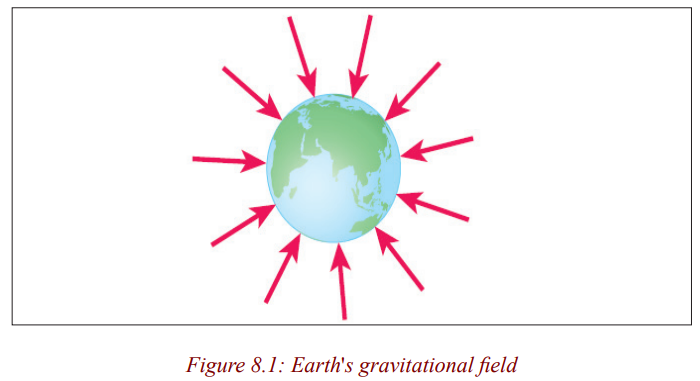
This diagram shows that:
• Gravitational forces are always attractive – the Earth cannot repel
any objects.
• The Earth’s gravitational pull acts towards the centre of the Earth.
• The Earth’s gravitational field is radial; the field lines become lessconcentrated with increasing distance from the Earth.
The force exerted on an object in a gravitational field depends on its position.
The less concentrated the field lines, the smaller the force. If the gravitationalfield strength at any point is known, then the size of the force can be calculated.
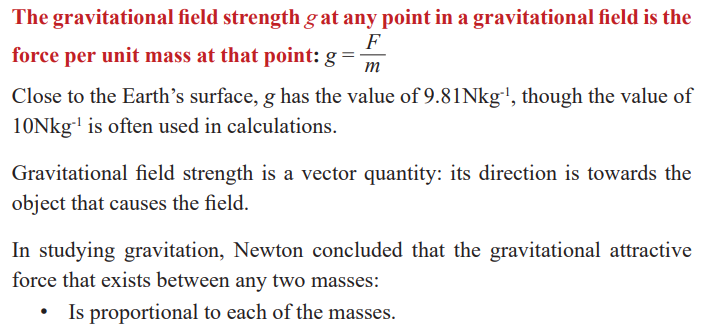
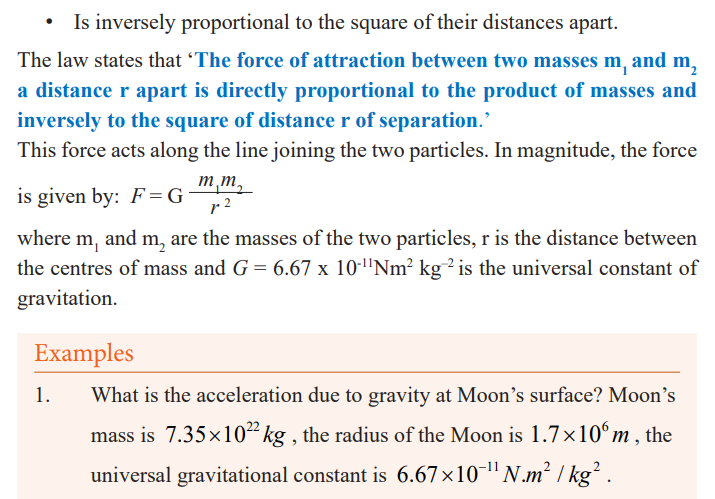
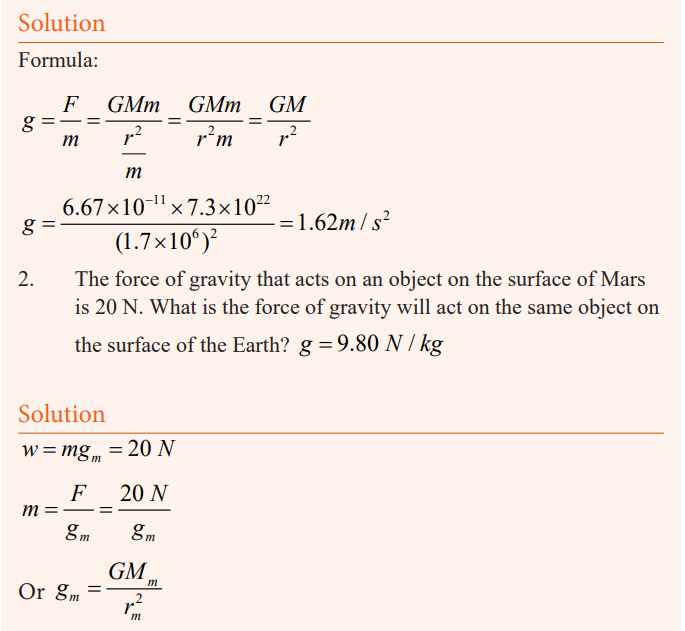

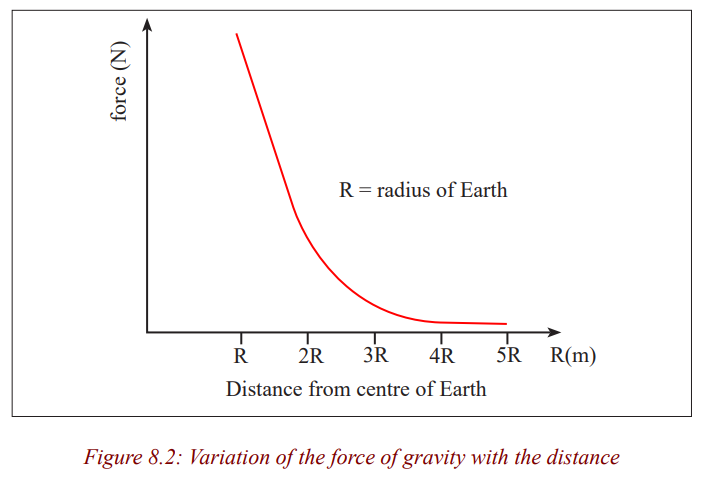
Gravitational potential energy
Potential and potential energy
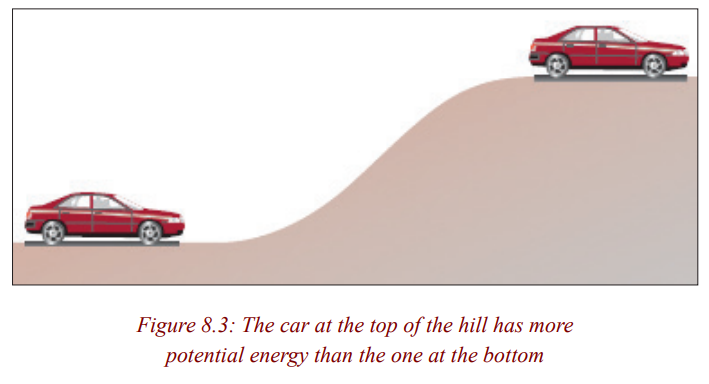
Question about fig. 8.3
• The car at the top of the hill has more potential energy than the
one at the bottom, but relative to ground level they both have zero.why?
• Note and record in your notebook your analysis.
Using this reference point:
• All objects at infinity have the same amount of potential energy; zero.
• Any object closer than infinity has a negative amount of potential
energy, since it would need to acquire energy in order to reachinfinity and have zero energy.
The gravitation potential energy is defined as the energy possessed by objectbecause of its position in a gravitational field.
The gravitational potential at a point in a gravitational field is the potentialenergy per unit mass placed at that point, measured relative to infinity.
Calculating potential and potential energy
When an object is within the gravitational field of a planet, it has a negative
amount of potential energy measured relative to infinity. The amount of
potential energy depends on:
• The mass of the object.
• The mass of the planet.
• The distance between the centres of mass of the object and theplanet.
The Centre of mass of a planet is normally taken to be at its centre.
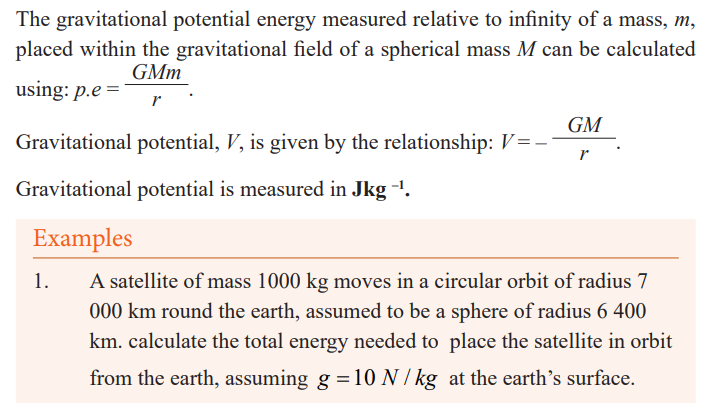

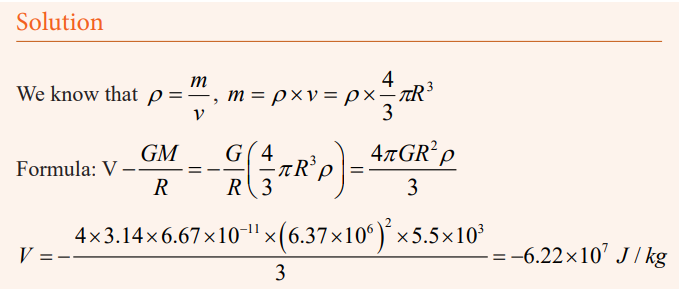
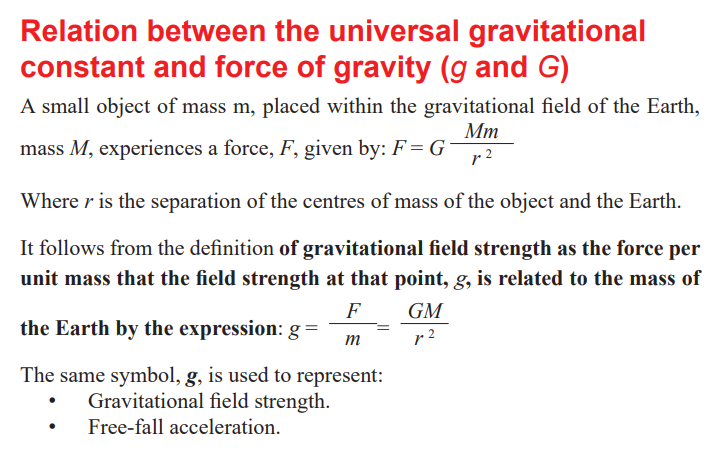
Kepler’s Laws
Activity1: Field work
As a class, let us visit one of the roundabouts (where three roads meet).
Try to see/check how cars, motorcycles, bicycles move around it.Qn i) Does the features on a roundabout move?
Assuming a roundabout to be a sun and vehicles to be planets, what can
you say?
1. Discuss your findings in groups of 5 members.
2. Present your findings to the whole class.
3. Note down the observation.4. Present your work to the teacher for marking.
Activity 2
We can relate the movement of the minute hand as the movement of
planets about the sun.
Kepler’s first law: The path of each planet about the sun is an ellipse with thesun at one focus(or planets describe ellipse about the sun as one focus).
Kepler’s second law: The line joining the sun to the moving planet sweeps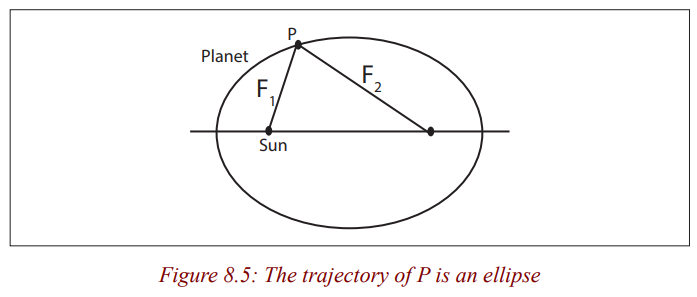
out equal areas in equal times.
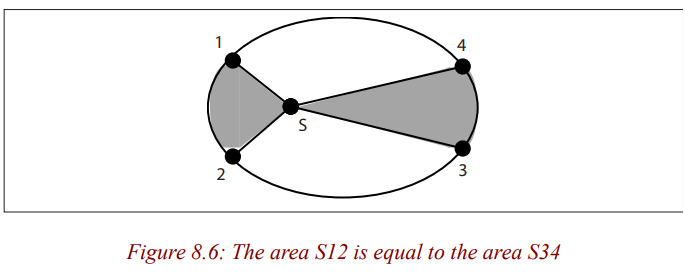
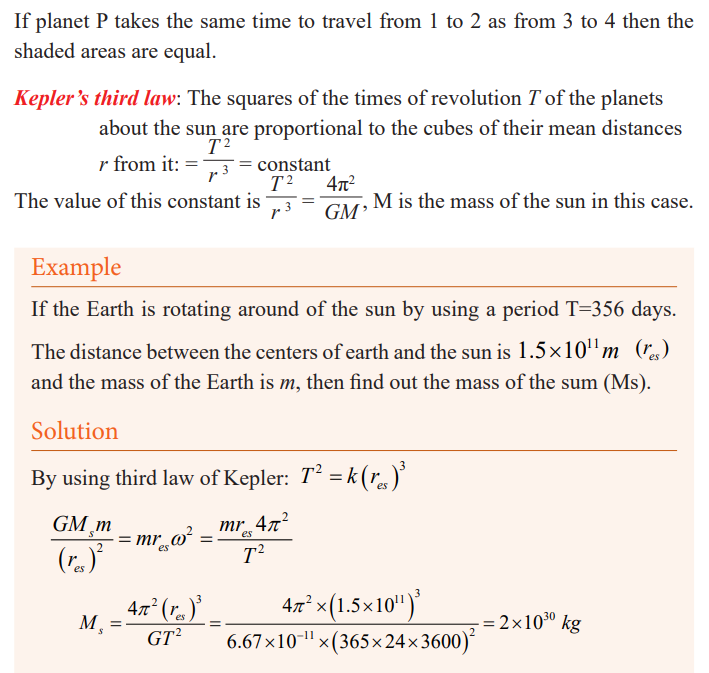
Proof of Kepler’s third law
Activity 3
• Using Newton’s law of gravitation (Formula) and the formula that
keeps the planet in circular paths (Formula for centripetal force),Derive expression for Kepler’s third law of planetary motion
• Put your derivation in your notebook after discussing it with yourfriends.

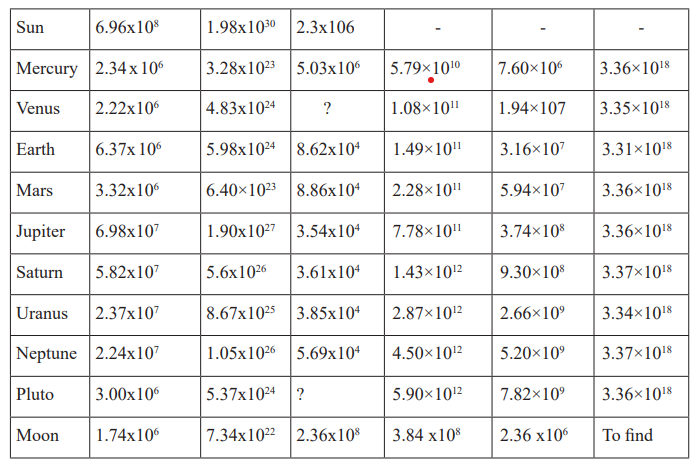
Examples
1. Calculate the force of gravity between two bowling balls eachhaving a mass of 8.0kg, when they are 0.50m apart.

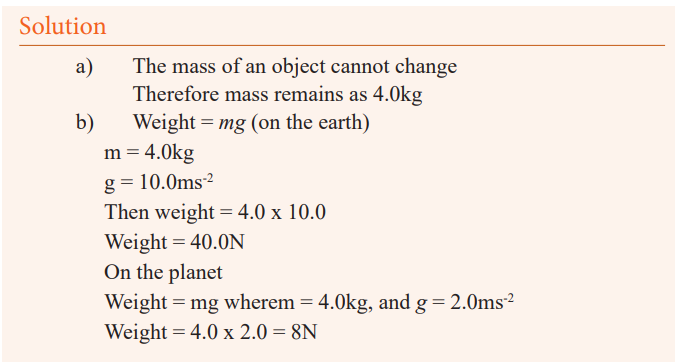
END UNIT ASSESSMENT
